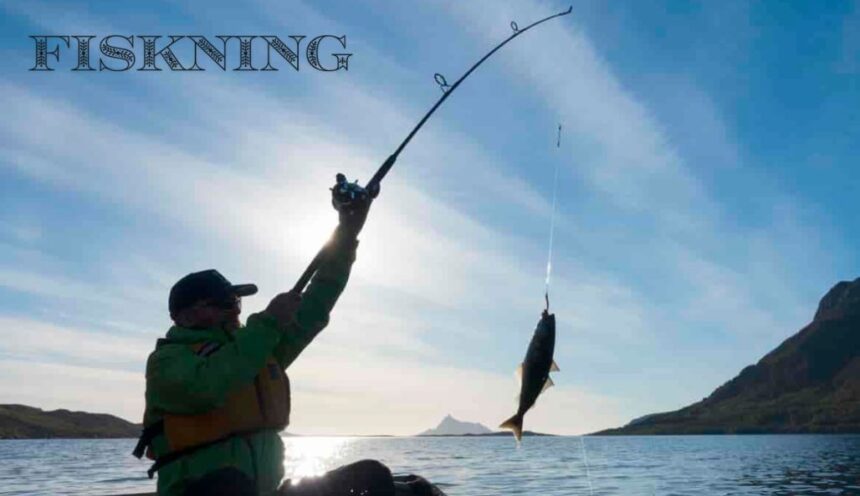As the sun rose over the still waters of the lake, a young boy cast his line into the glassy surface. It was early morning, the kind where mist dances along the water’s edge, and the only sound is the occasional splash of a curious fish. He wasn’t thinking about school or video games. He was waiting—for a bite, a tug, a thrill. More than anything, he was absorbing the quiet magic of the moment. That boy was me, and that morning was when I fell in love with fiskning.
Fiskning, the simple act of fishing, has become more than a hobby for many—it’s a form of meditation, a way to reconnect with nature, and even a means of survival. Whether on tranquil lakes, rugged coasts, or icy fjords, fiskning offers something that modern life rarely does: peace, patience, and purpose.
What Is Fiskning?
Fiskning is the Swedish word for fishing, encompassing a wide range of activities where people catch fish, usually in natural bodies of water like lakes, rivers, or oceans. While it may sound basic, it’s a skill with deep cultural roots, technical aspects, and even spiritual significance.
Core Types of Fiskning
-
Recreational fishing – For fun, relaxation, and sport.
-
Commercial fishing – For mass seafood production.
-
Subsistence fishing – For daily survival and local consumption.
-
Fly fishing – A more artistic form using artificial flies.
Each method requires different tools, techniques, and mindsets—but all fall under the rich umbrella of fiskning.
Why People Are Drawn to Fiskning
People fish for different reasons, but the motivation often goes beyond the catch.
Mental Health and Relaxation
Fiskning offers a natural way to unplug. The rhythmic casting, the sound of water, and the lack of screen time can be incredibly soothing.
-
Reduces stress and anxiety
-
Boosts mindfulness and patience
-
Encourages time outdoors and vitamin D intake
Connection With Nature
Spending hours in nature helps us reconnect with the Earth. Whether you’re fishing in a forest stream or on a rocky shoreline, you become a quiet observer of natural life.
Bonding and Tradition
Fishing is often a generational activity passed from parent to child. It strengthens relationships through shared stories, teamwork, and mutual learning.
Essential Gear for Fiskning Beginners
Getting started with fiskning doesn’t require an expensive setup. Here’s a simple list of beginner-friendly gear:
-
Fishing rod and reel – Start with a spinning rod for versatility.
-
Fishing line – Choose monofilament or fluorocarbon.
-
Hooks and bait – Live bait (worms or minnows) or artificial lures.
-
Tackle box – To organize your gear.
-
Fishing license – Required in many areas.
-
Comfortable clothing – Layers, waterproof boots, and sun protection.
🧠 Pro Tip: Start at a local pond or small lake where fish are abundant and easy to catch. It builds early confidence.
Where to Go Fiskning
Ideal Locations for a Great Catch
Choosing the right spot can make or break your fishing trip. Look for:
-
Local lakes and reservoirs – Stocked with fish and easy access.
-
Rivers and streams – Perfect for trout or salmon fishing.
-
Coastal areas – Sea fiskning offers bigger game fish.
-
Ice-covered lakes – Try ice fishing in colder regions.
Check local fishing reports or community groups for tips on where the fish are biting.
Seasons Matter: When to Fish
The time of year significantly affects fish behavior and availability.
| Season | Best For | Tips |
|---|---|---|
| Spring | Trout, perch, pike | Fish are hungry after winter |
| Summer | Bass, catfish, mackerel | Fish early morning or evening |
| Fall | Salmon, walleye | Cool waters trigger feeding |
| Winter | Ice fishing species | Requires special safety gear |
Simple Techniques for Successful Fiskning
You don’t need to be an expert to catch fish. Here are beginner-friendly techniques:
1. Still Fishing
Cast your line and wait. It’s ideal for beginners and kids.
2. Casting and Retrieving
Used with lures—cast out and reel back to mimic prey.
3. Fly Fishing
Special technique using hand-tied flies and lightweight rods. It takes practice but is rewarding.
4. Trolling
Drag baited lines behind a moving boat—great for lakes and open water.
Safety Tips While Fiskning
Safety should always come first, whether you’re onshore or in a boat.
-
Wear a life jacket when near deep water or boating.
-
Use sunscreen and drink water regularly.
-
Know local regulations like catch limits and protected species.
-
Keep a first aid kit for minor cuts or hooks.
Environmental Responsibility in Fiskning
Being a good angler also means being a responsible steward of nature.
Catch and Release
If you’re not planning to eat the fish, release it quickly and gently.
Clean Up After Yourself
Always pack out trash, fishing line, and bait containers.
Respect Local Wildlife
Keep noise levels down and avoid disturbing habitats.
Fiskning Around the World
Fishing is a global practice, but each culture has its own unique flavor:
-
Sweden & Norway – Known for coastal fiskning and ice fishing.
-
Japan – Masters of finesse with fly and stream fishing.
-
USA – Bass fishing is a major sport with televised tournaments.
-
Africa – Nile fishing is both cultural and vital for food.
Understanding global fishing traditions adds depth to your own experience and can inspire travel-based adventures.
The Meditative Power of Casting a Line
More than just a means to catch dinner, fiskning provides a rare sense of stillness. In a world where we are constantly bombarded with noise, notifications, and stress, fishing teaches us to wait. To observe. To let go of control and trust nature’s rhythm.
Many seasoned anglers describe it not just as a sport but a way of life—one that builds resilience, patience, and gratitude.
Becoming a Responsible Angler
If you want to practice fiskning in a way that’s both enjoyable and ethical, keep these core principles in mind:
-
Follow local rules to protect fish populations.
-
Practice selective harvest—only keep what you’ll eat.
-
Educate others about sustainability and conservation.
-
Join local fishing communities to share knowledge and experiences.
How to Get Kids Into Fiskning
Introducing children to fiskning can plant seeds for lifelong outdoor appreciation.
Make It Fun and Simple
-
Use child-sized rods and bright bobbers.
-
Choose easy-to-catch fish like sunfish.
-
Pack snacks and keep the mood light.
-
Celebrate small catches, even if it’s just a nibble!
Digital Tools That Help With Fiskning
Technology can complement your experience without ruining its purity.
Helpful Apps
-
Fishbrain – Community-based app with catch locations.
-
Navionics – Waterway maps for serious anglers.
-
My Fishing Advisor – Tailored recommendations based on conditions.
Use tech sparingly to enhance rather than dominate your trips.
Final Thoughts:
At its core, fiskning is not just about catching fish—it’s about catching moments. It’s the sunrise over the water, the joy of a tug on the line, and the timeless bond between humans and the wild. Whether you’re casting into a quiet lake or battling a sea bass offshore, each experience teaches you patience, resilience, and respect for the world around you.





